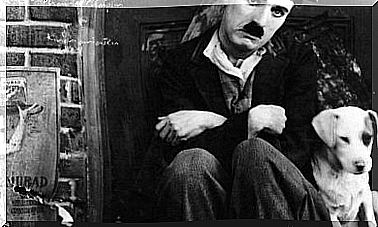Penelope, The Myth Of The Woman Who Waits Forever

The myth of Penelope is part of the epic poem The Odyssey , written by Homer. The function of the epic is, among others, to build models for the peoples to imitate. The characters that intervene in his narratives are archetypal. That is, they synthesize a series of values and skills that make them the ideals of being for a society.
As is often the case with these mythical tales, the most interesting messages are those that come between the lines. Penelope’s story is, in itself, very beautiful, in addition, it is very revealing to scrutinize what it represents from a cultural point of view. In this case, they speak to us about the feminine and the position of women in the couple relationship.
Penelope is the symbol of fidelity and self-denial, but she also exhibits traits that appear in different mythologies. Those traits have to do with cunning and the ability to deceive as weapons to achieve their purposes. The feminine, then, appears as an ambiguous, unreliable and, for the same reason, dangerous terrain.

Penelope’s story
According to the story created by Homer, Penelope is born in Sparta, to a freshwater nymph and the king of the region himself. It all begins when Ulises, a brave warrior, feels alone and decides to find a woman to accompany him and comfort him. His search leads him to Sparta, where he meets the most beautiful woman he has ever seen: Helena. The same Helen of Troy.
That woman was so beautiful that her suitors numbered in the hundreds. The girl’s father, and Ulysses himself, feared that the dispute over their love would unleash chaos in Sparta. So the two agreed to decree that the winning suitor should be respected by those who were defeated. Ulises felt uncomfortable about the situation.
By then a beautiful woman named Penelope had already arrived in Sparta. She was Helena’s cousin and she had come for advice. When Ulises and Penelope meet, they fall in love at first sight. They both remain mute, knowing that they never wanted to part anymore.
The departure to Ithaca and the separation
Ulysses and Penelope went to live in Ithaca. His father, Icario, tried to get him to stay in Sparta. She just kept silent and covered her face with a veil. Thus he implied that he would go with Ulysses. In the place where this happened, Icario later built a temple dedicated to modesty .
The new couple left, but not before giving a long kiss as a seal for their love. Already in Ithaca, a year later, they had a son: Telemachus. Shortly after the Trojan War breaks out and Ulysses has to leave. It took him 10 years in the war and another 10 on his return journey. During that time he was seduced by a nymph, a magician and a princess, but he always had his wife and son on his mind.
Meanwhile, Penelope, being a woman who was alone, began to be surrounded by multiple suitors. These were installed in his house. They ate and drank as they pleased. They all urged her to accept one of them, since they left Ulysses for dead. She, however, sensed that her husband was alive and would return.

Penelope’s cunning
To avoid the decision to accept one of her suitors, Penelope said she would choose when she finished weaving a tapestry. What he came up with was knitting during the day and undoing at night. Thus passed four years, at the end of which, Ulysses finally returned. After a series of tests, he managed to recognize it. Ulysses, for his part, finished off the suitors.
The truth is that there are several versions of what happened . The most widespread, and the one we like to hear the most, tells that “they lived happily ever after.” Another version indicates that Ulysses repudiated his wife, accusing her of having been the one who had attracted the suitors. There are also versions that he killed her for being unfaithful or that he returned her to her father for the same reason.
Penelope is the model of the self-sacrificing woman, who is silent and waits. She is forced to do and undo, over and over again, her own work as the “lost” love returns. His tapestry represents that vicious cycle of resistance. His attitude, what western culture established as ideal for a wife.









